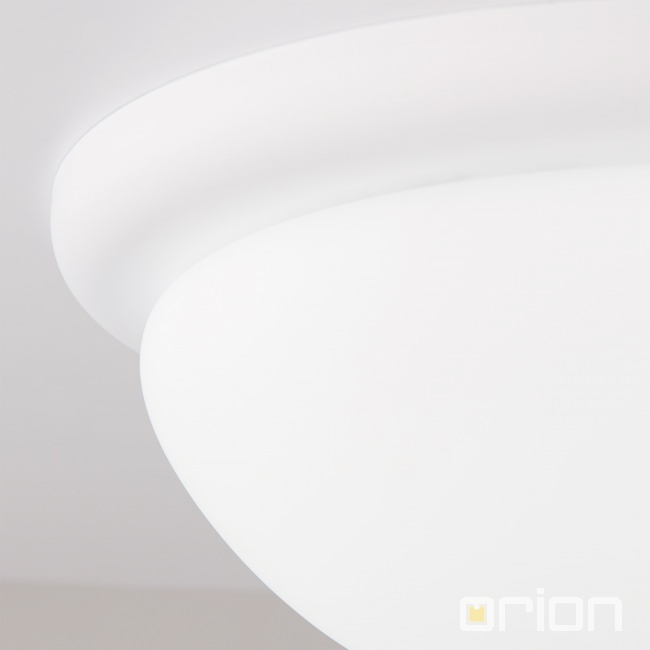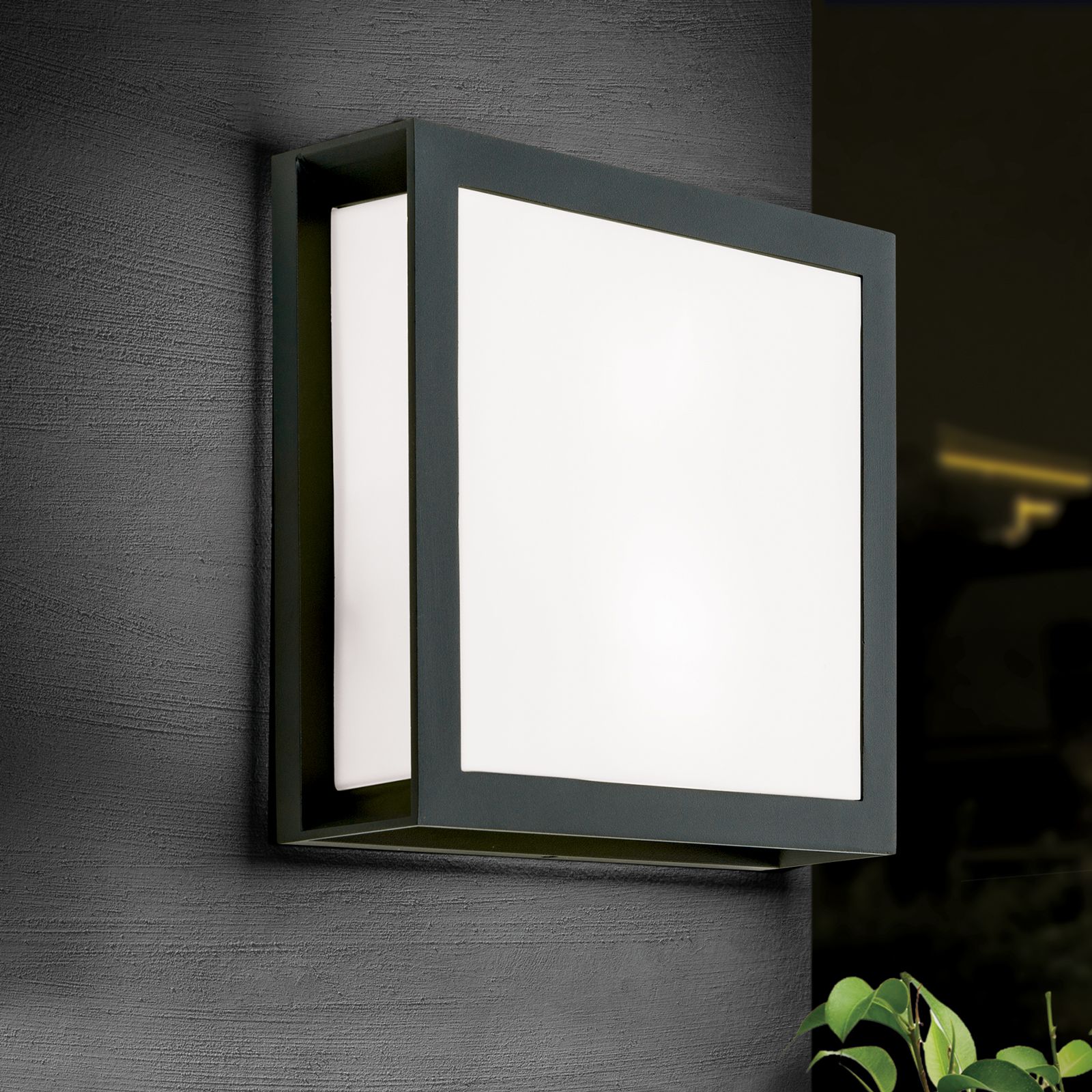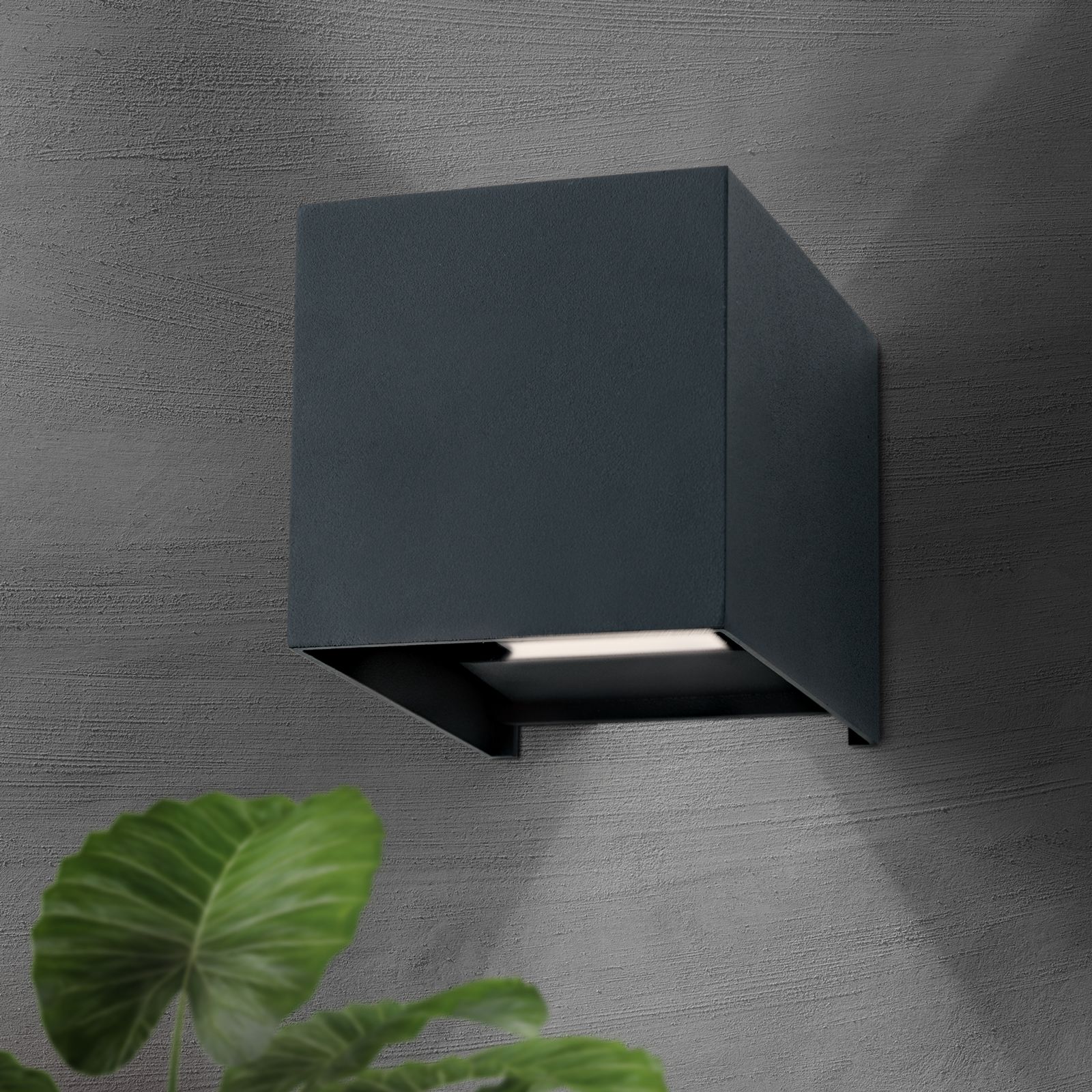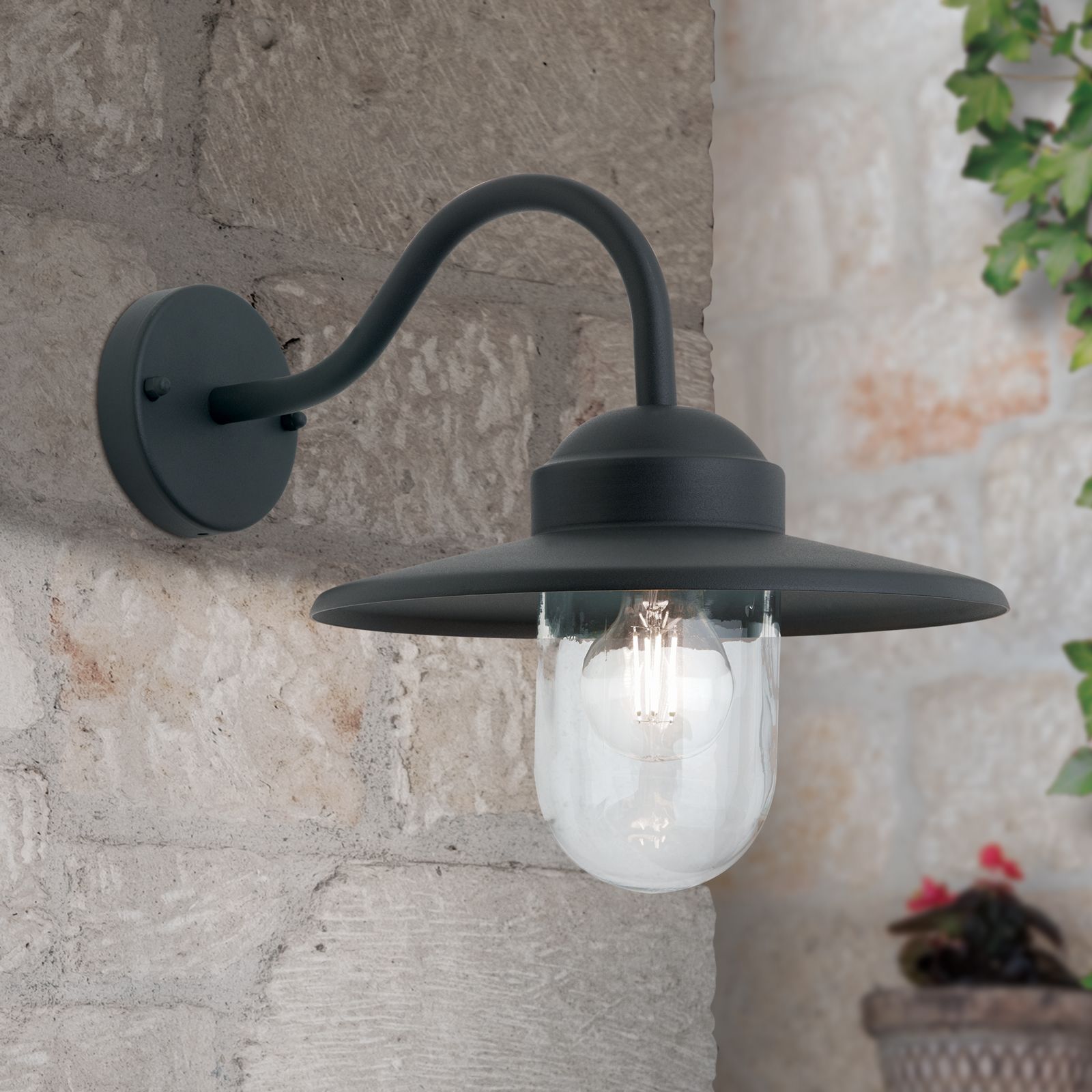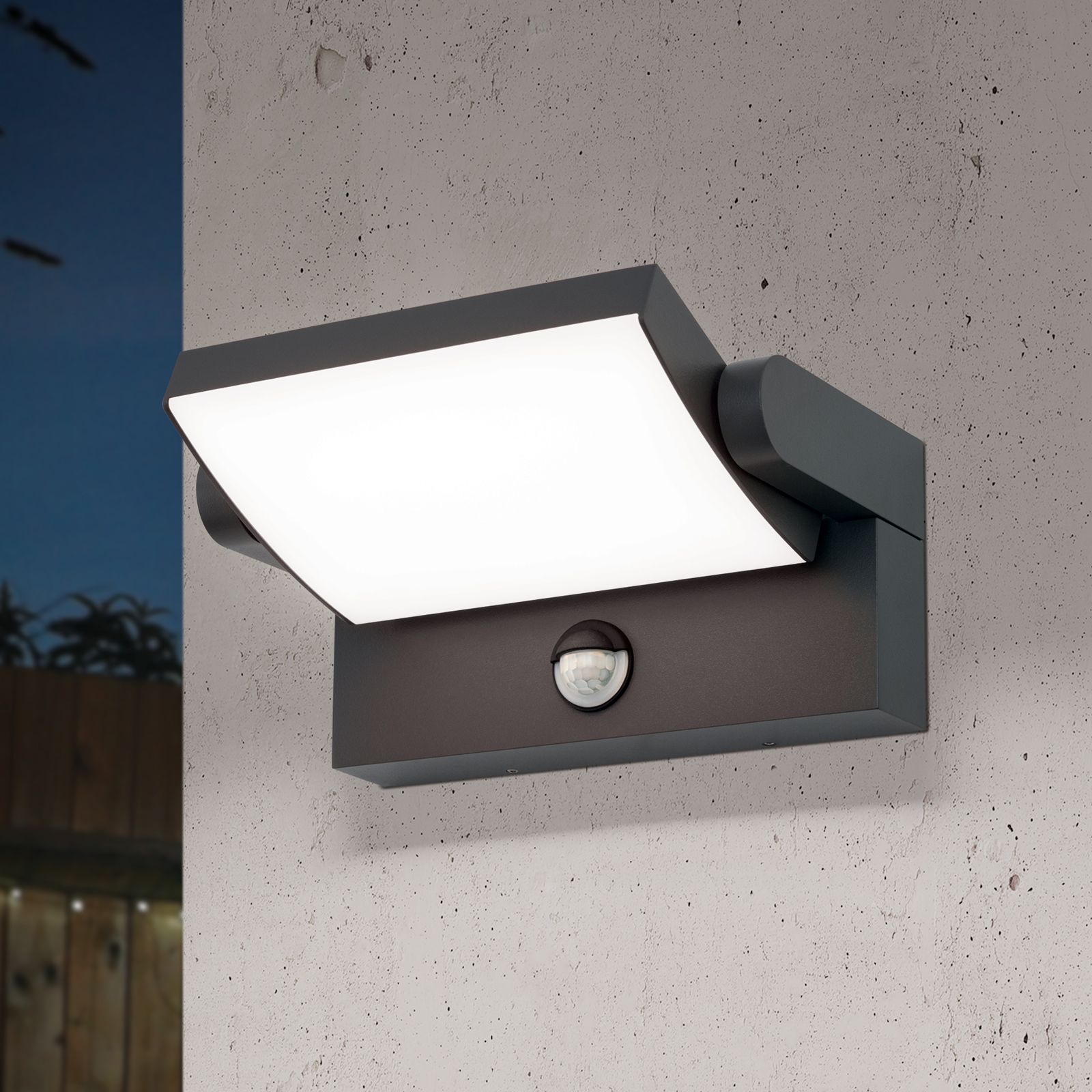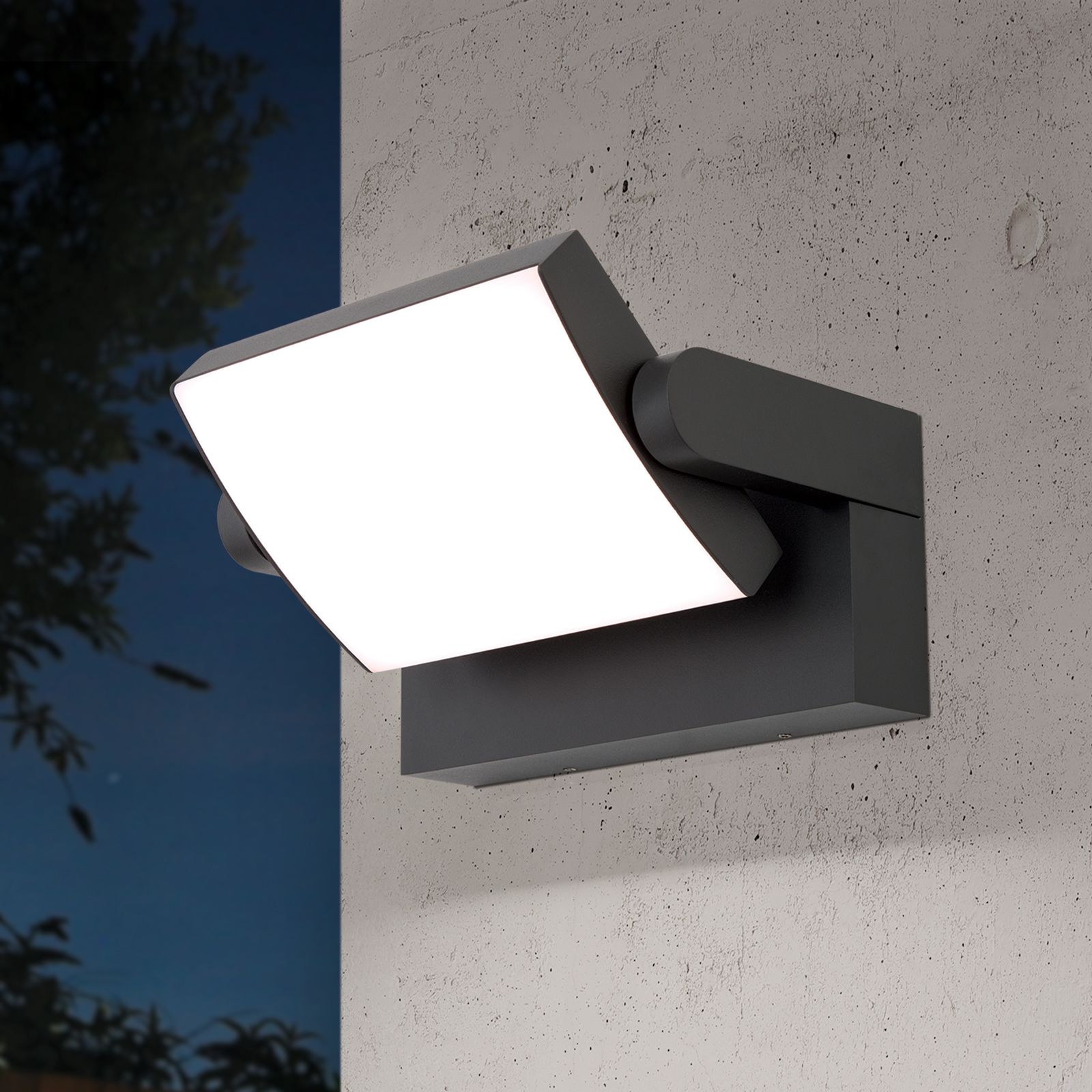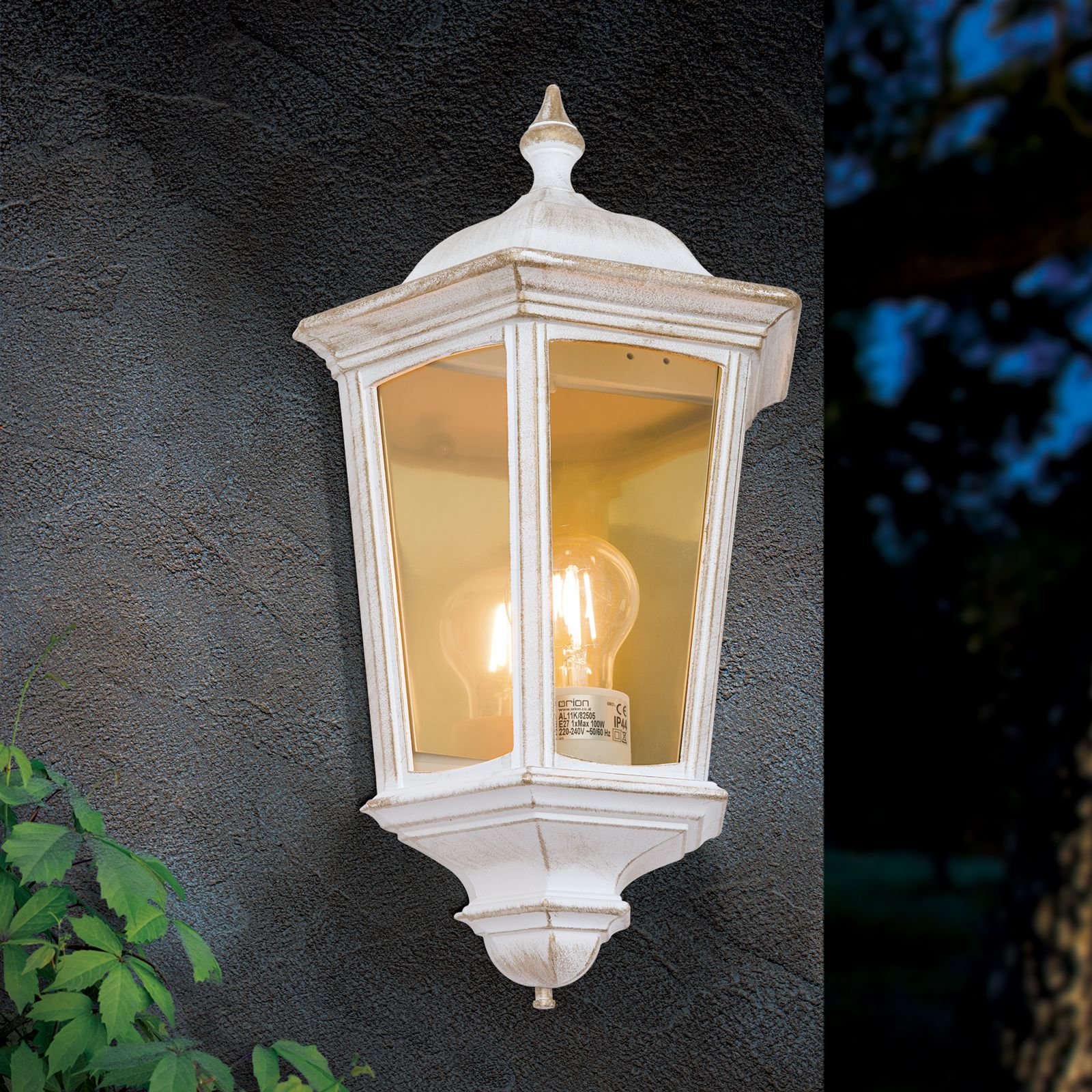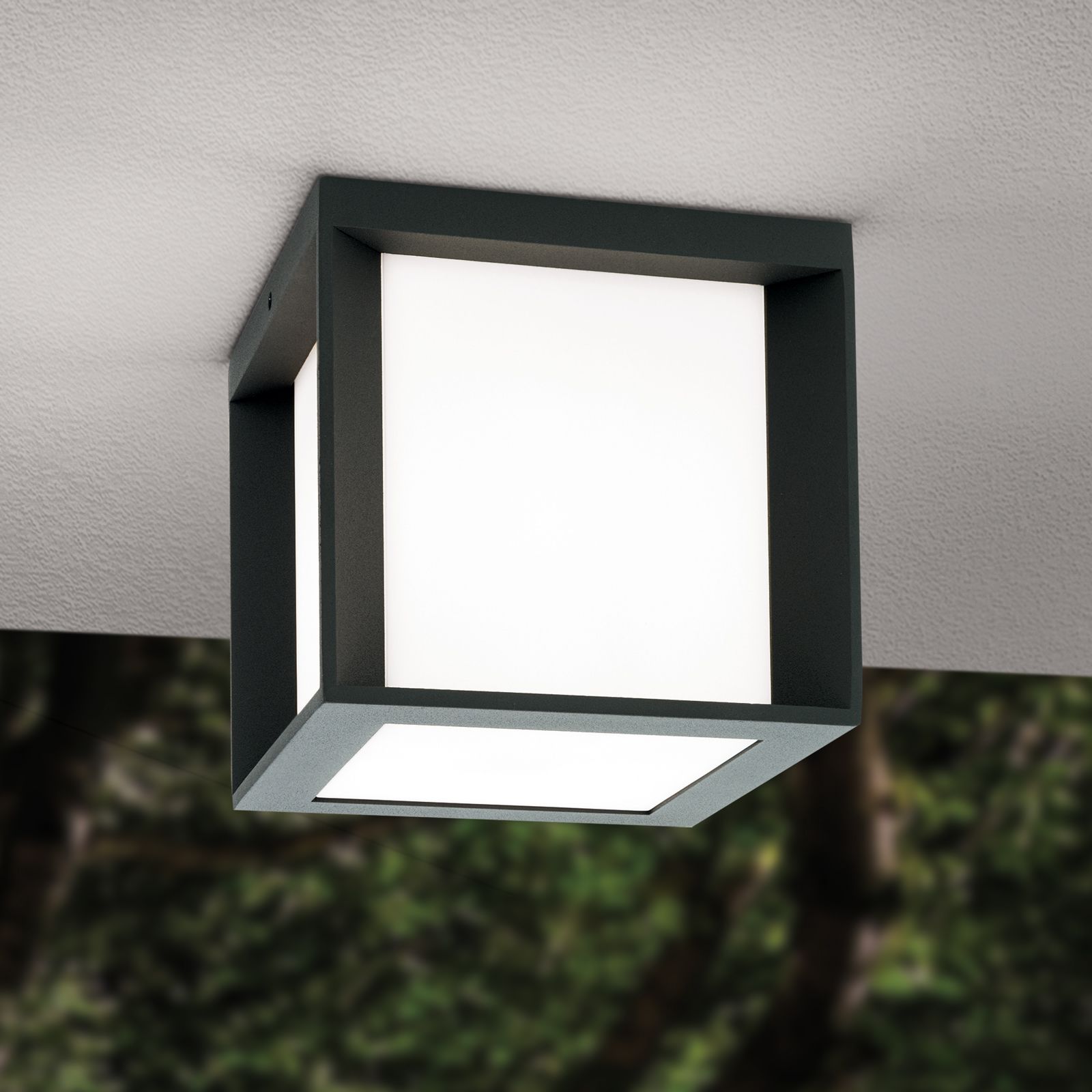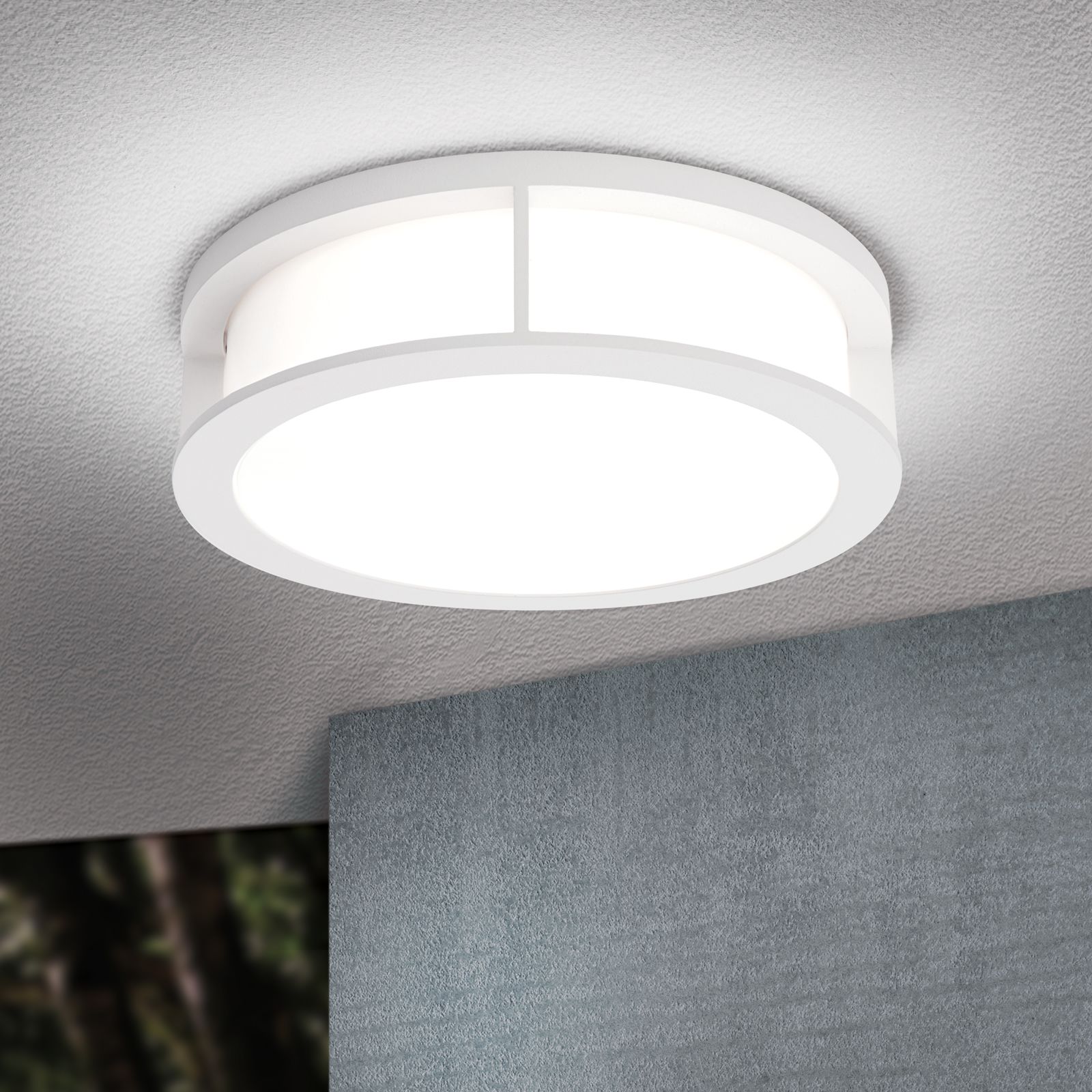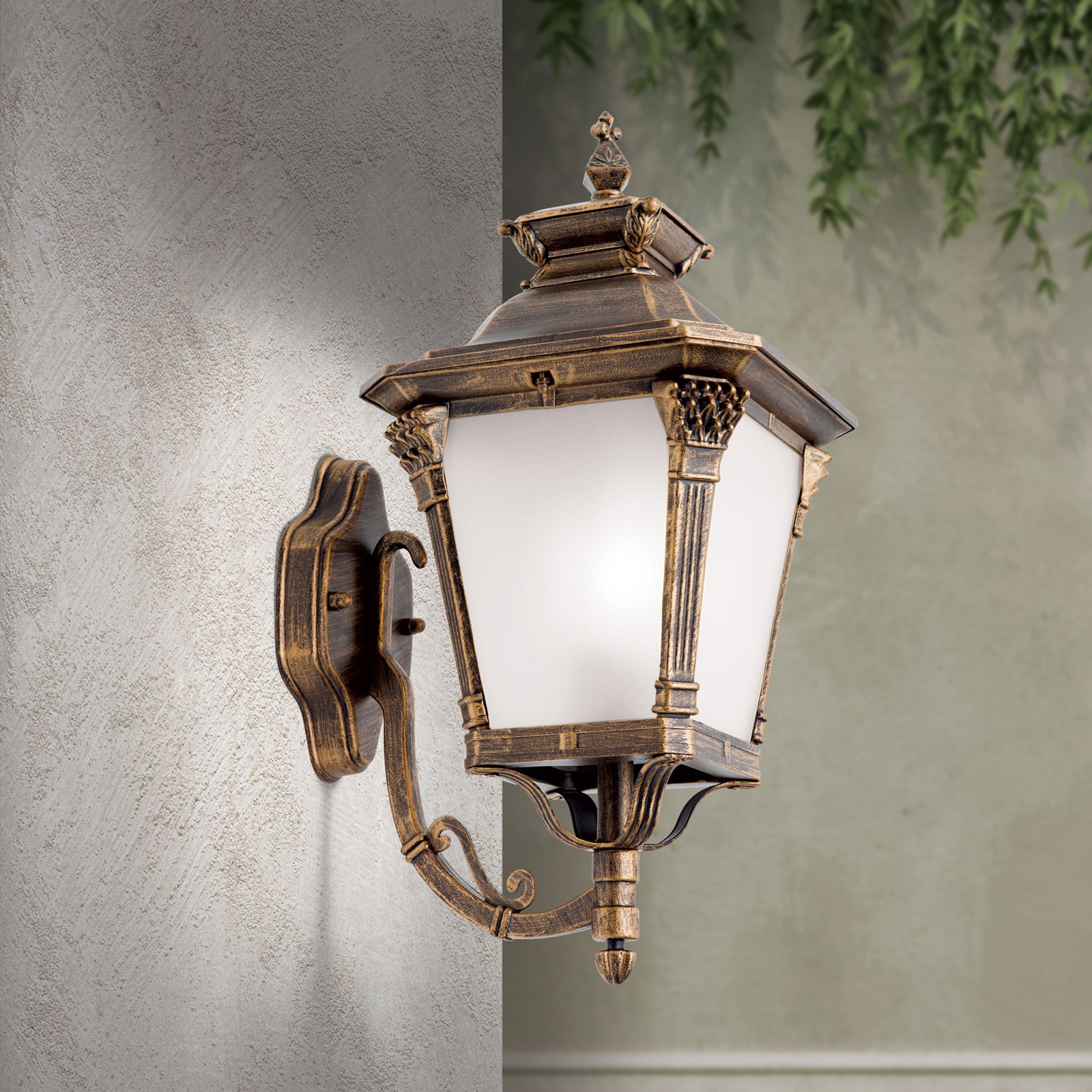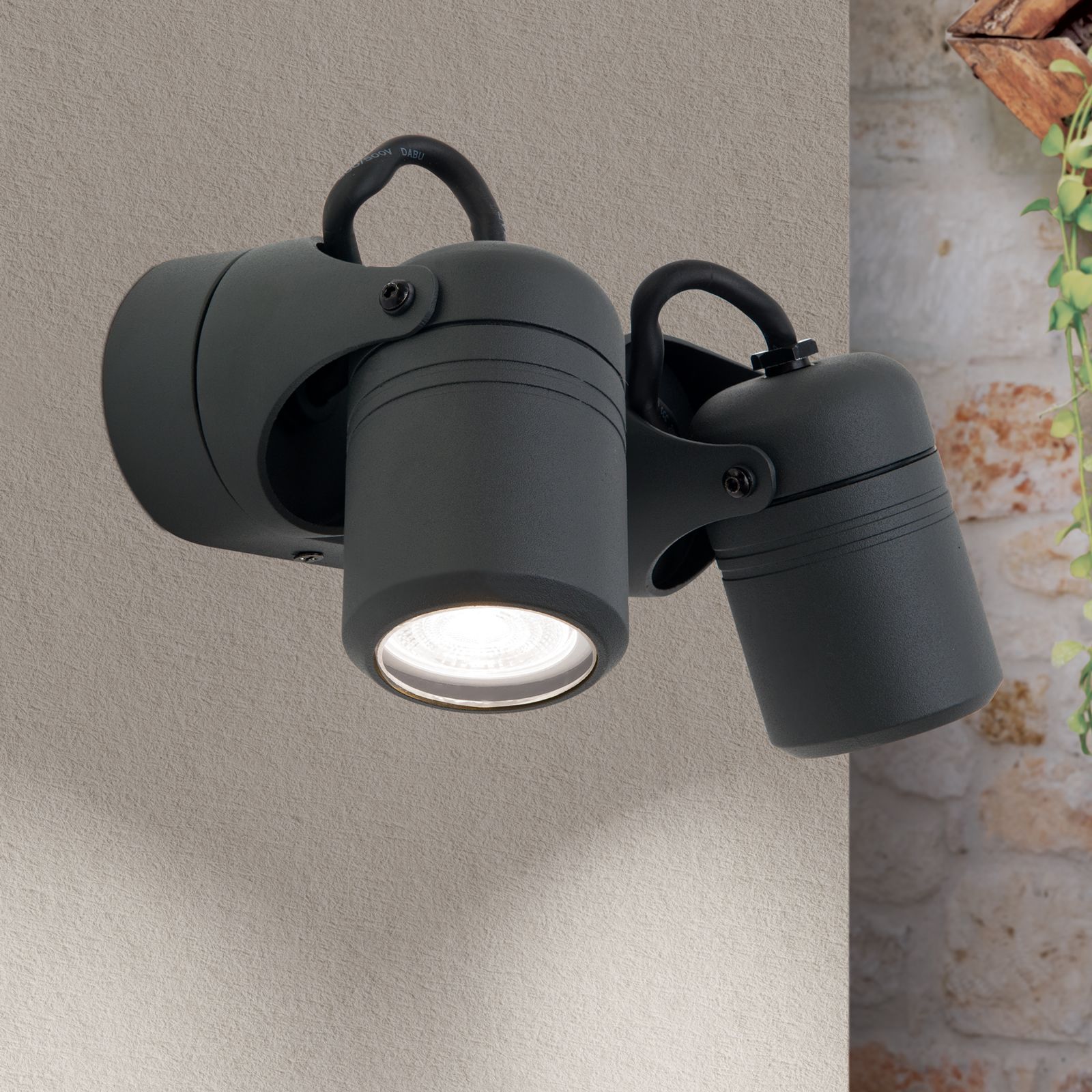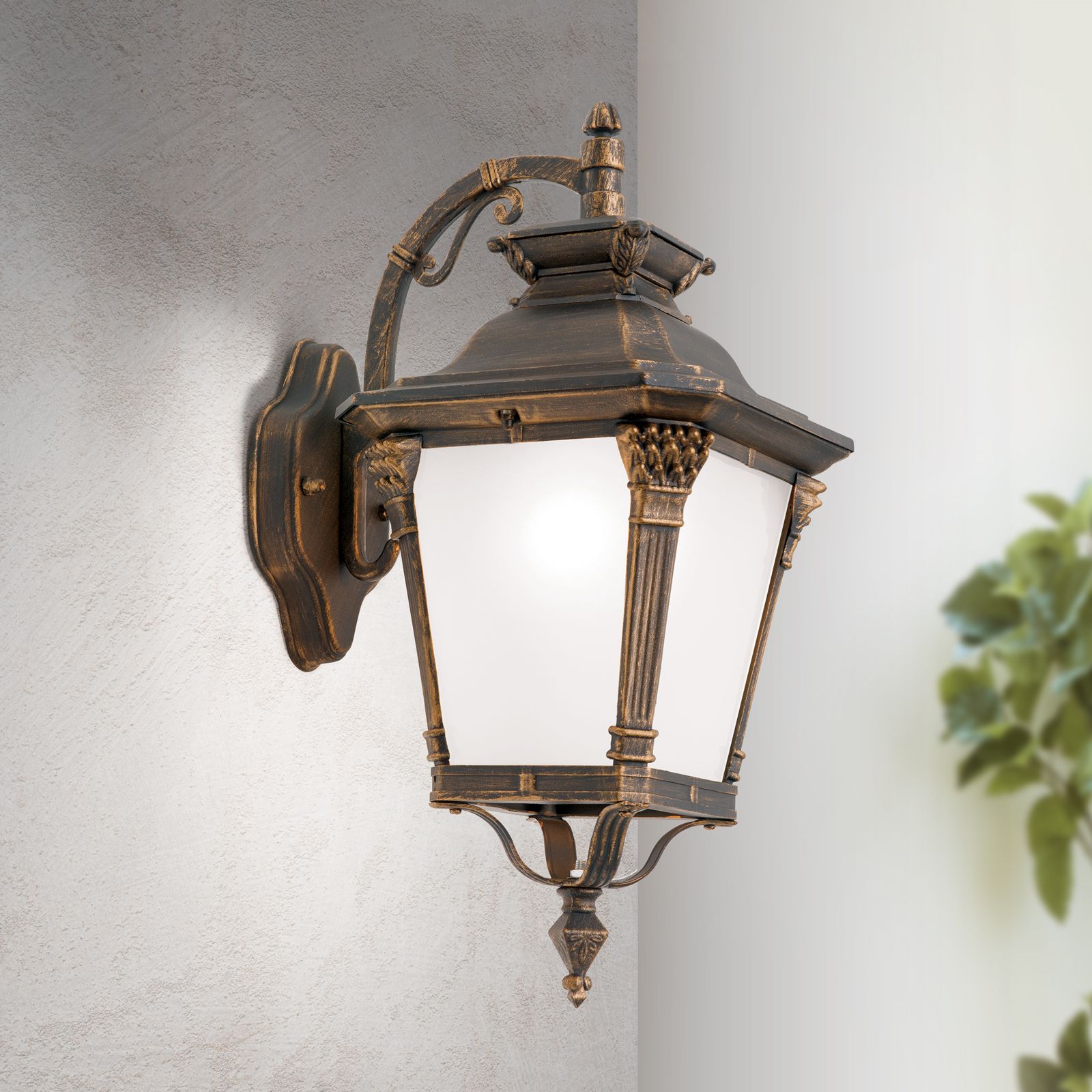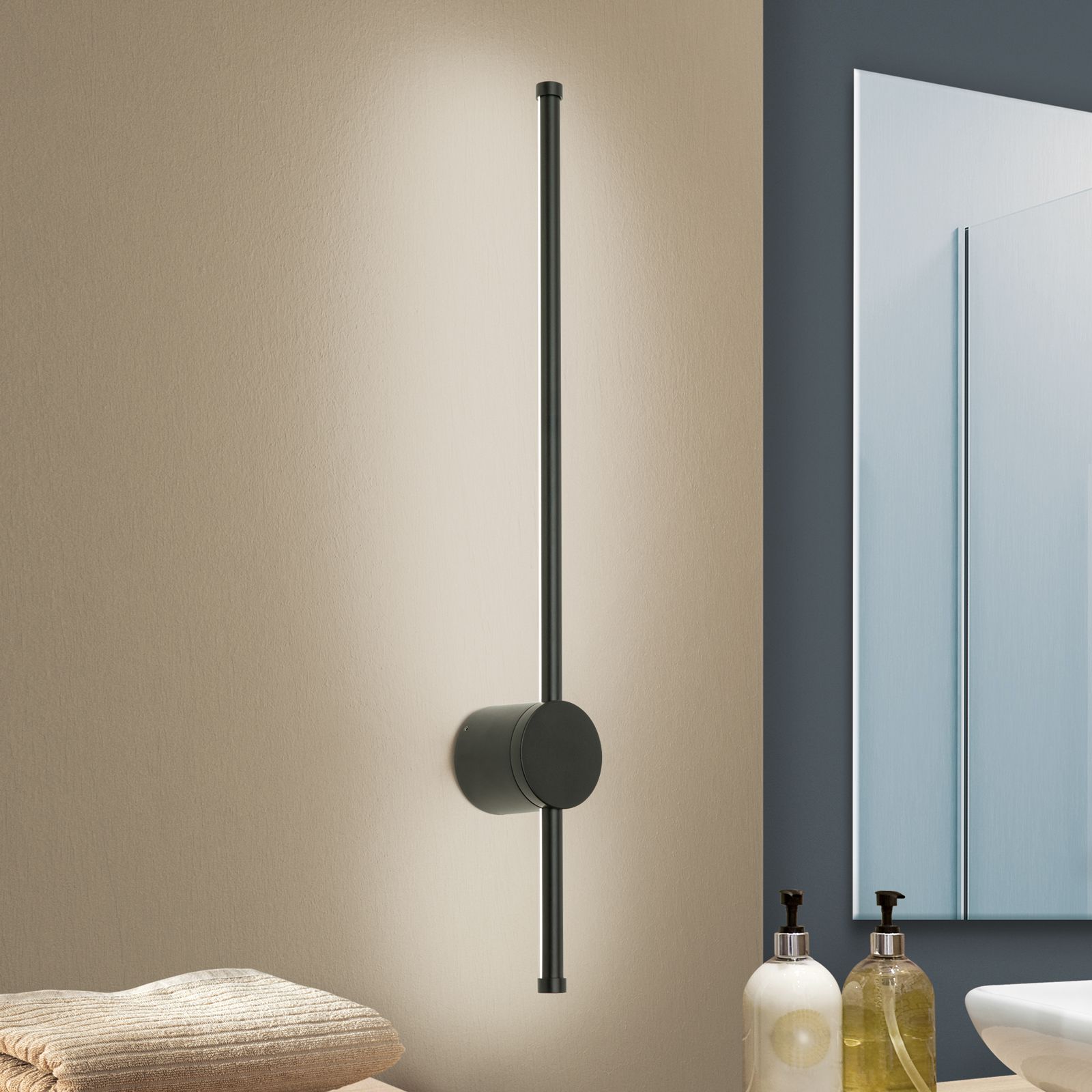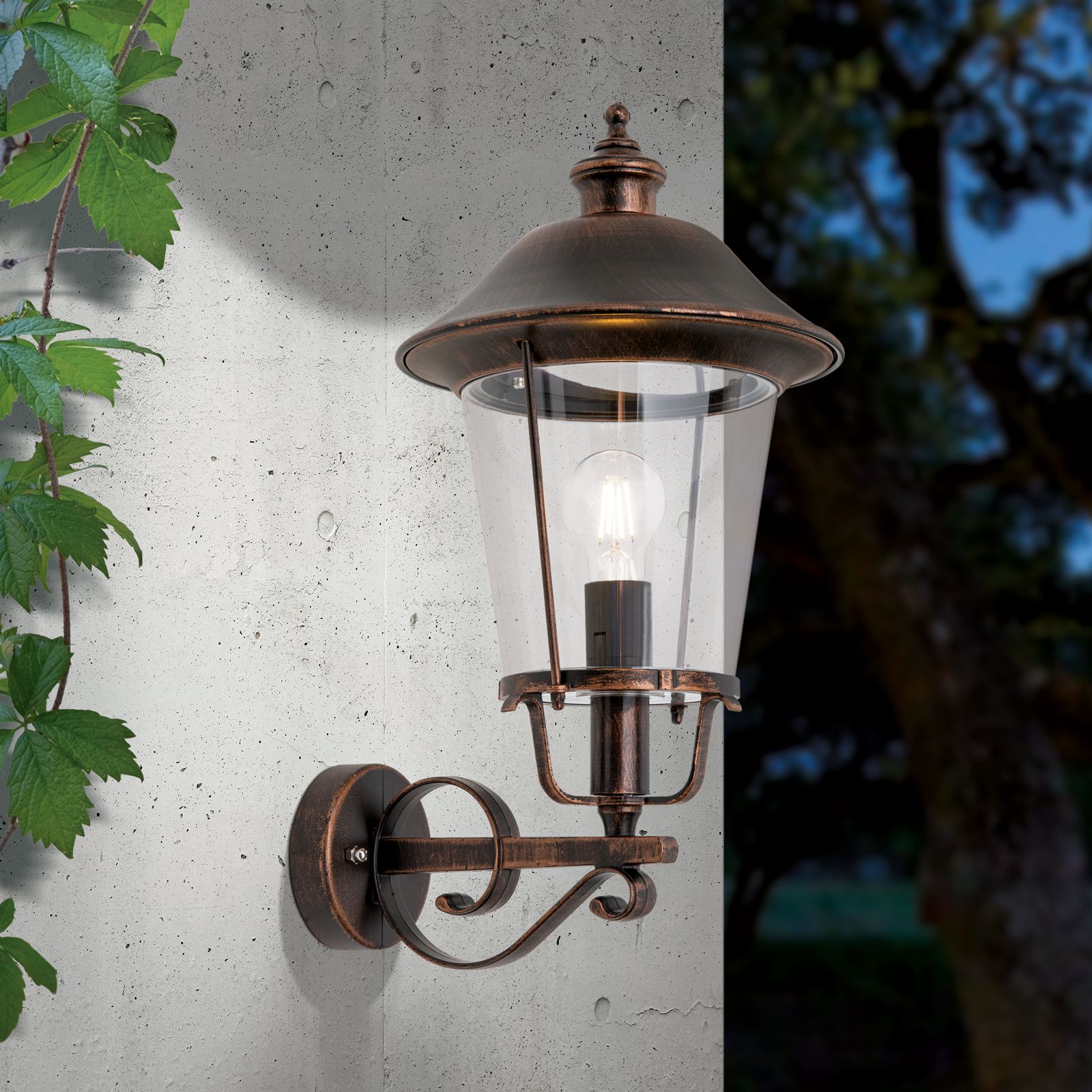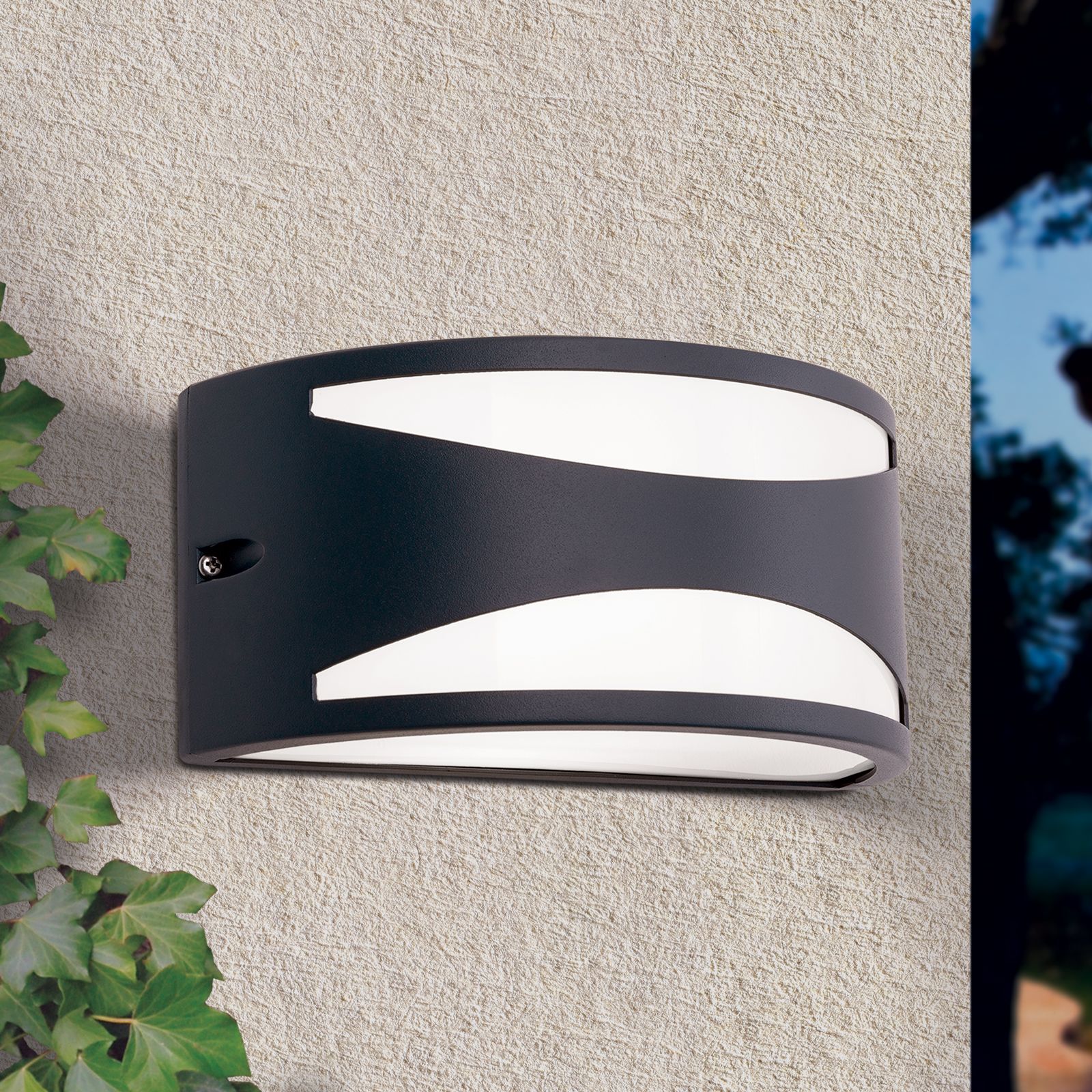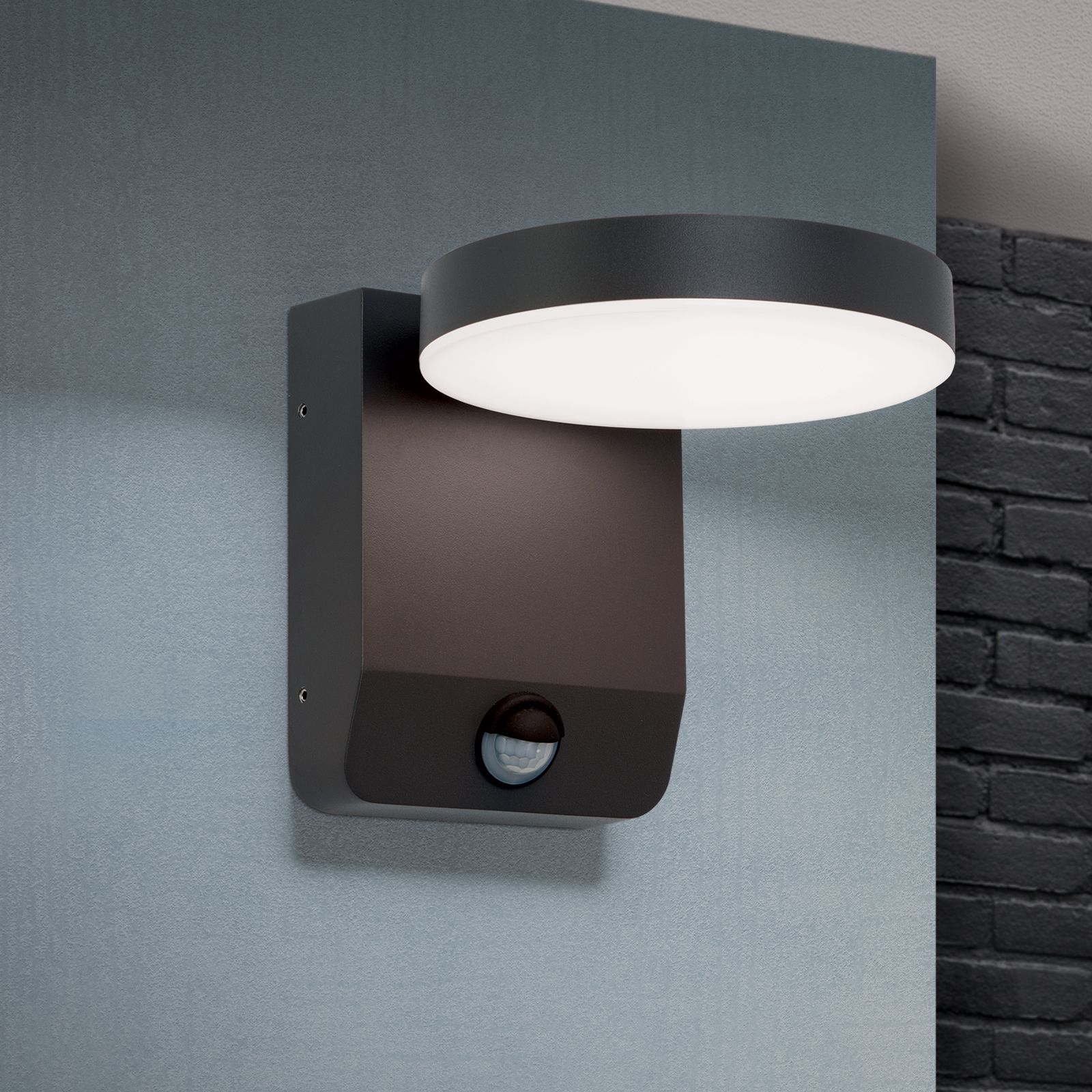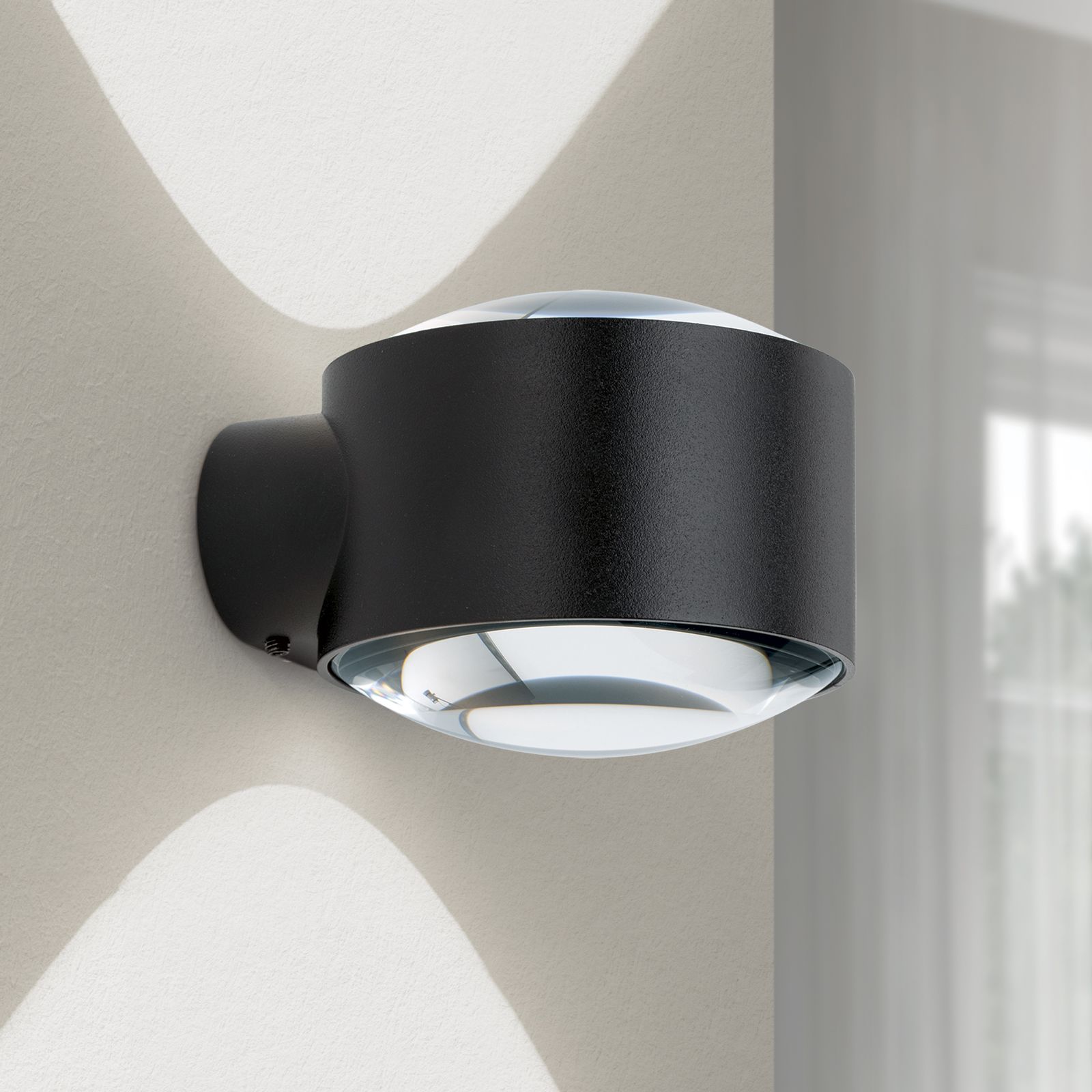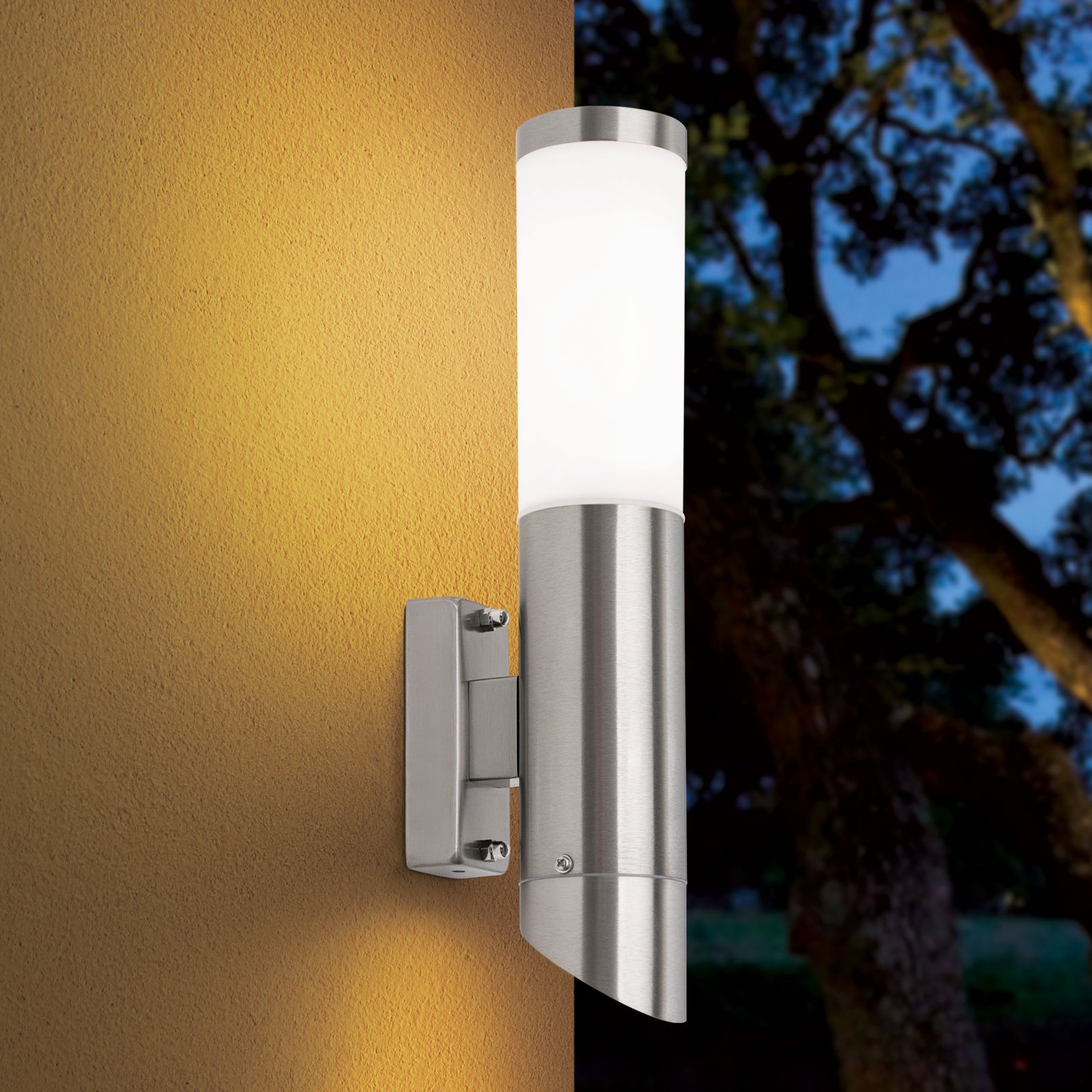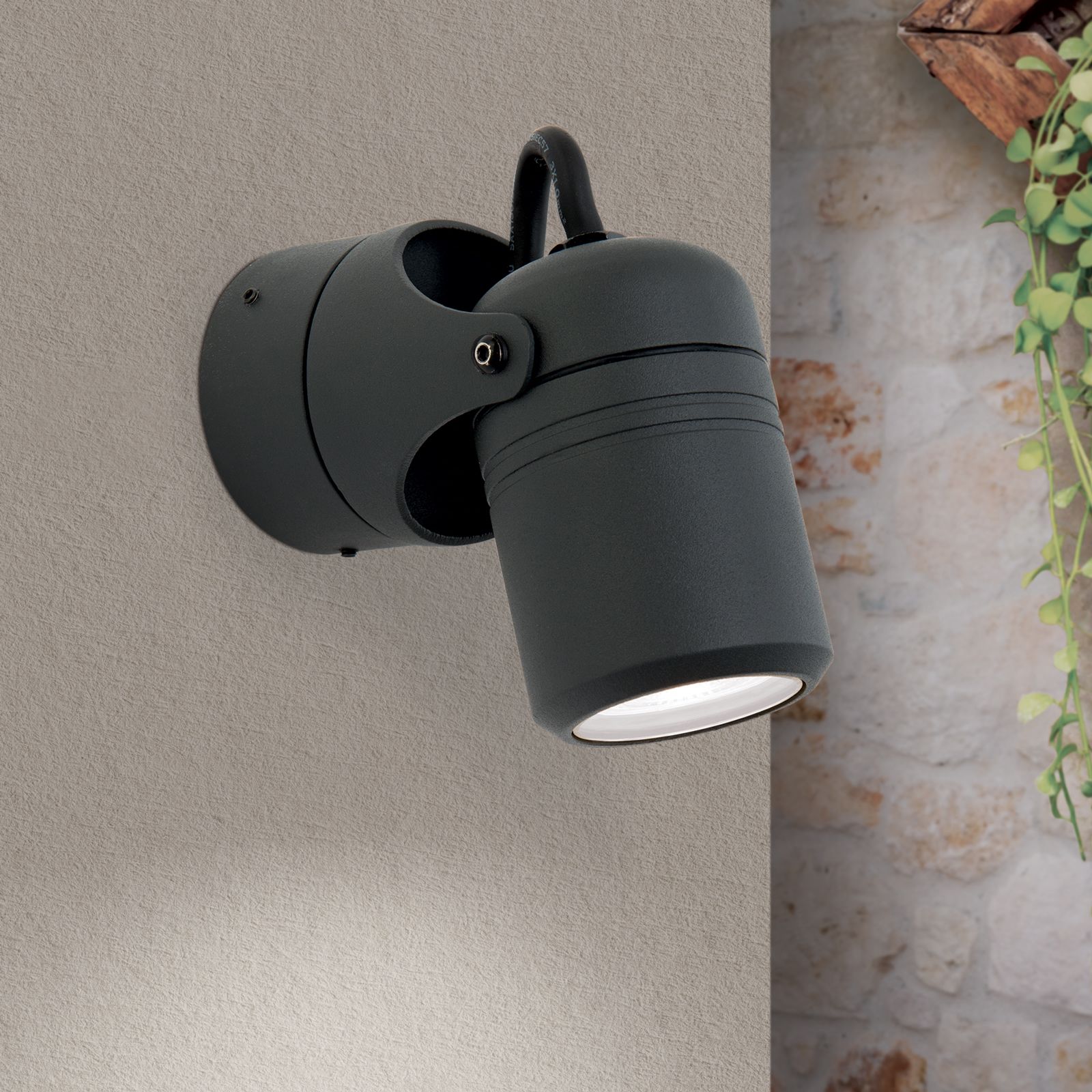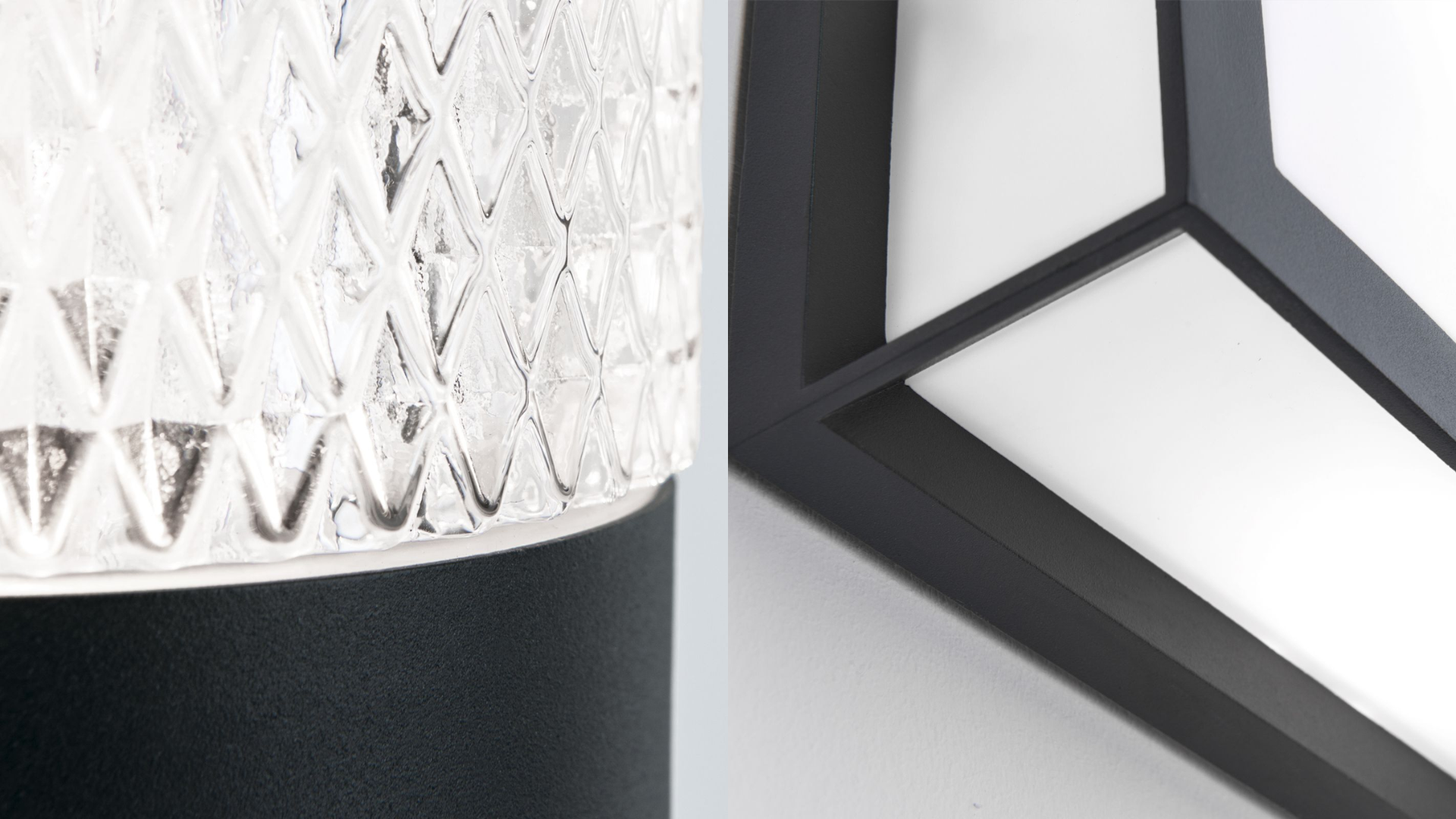
Outdoor wall lights
Practical & stylish
Outdoor lights let you set targeted, attractive accents in addition to being of high practical us as they illuminate the way.
Filter
How bright should the outdoor luminaire be?
The required brightness of outdoor wall luminaires depends on the area of application and intended use. Depending on requirements, 200 to even 1000 lumens are recommended. For discreet basic illumination intended for a targeted area, slightly more than 200 lumens are sufficient. If a large façade needs to be highlighted, a powerful outdoor spotlight with up to 1000 lumens is required.
However, you can control the lighting effect of your outdoor wall luminaire with the following elements:
- Clear or opal: Is the shade of your chosen light clear or satinated? Or is the light source fitted with a frosted or clear glass? The clearer they are, the more direct the light distribution. With matt finishes, light is reflected in a glare-free, satinated manner thus appearing more subdued.
- Dimmability: If you want to satisfy several requirements with your outdoor wall luminaire, you can enjoy both full illumination and relaxed mood lighting by dimming.
- Direct or indirect light: Direct light usually appears brighter, while indirect light illuminates the surroundings. Depending on area illuminated and light cone, this can provide a more atmospheric and subdued light. Outdoor wall luminaires with a light cone that goes up as well as down are suitable for this purpose, for example.
What protection class do I need?
The respective protection class indicates the area for which the light is suited. This is particularly relevant for outdoor use, as the luminaire can be exposed to a wide range of weather conditions and safety is top priority.
The protection class indicator is composed of two numbers. The first stands for protection against foreign bodies and up to which size this extends. The second number stands for degree of protection against moisture, i.e. from no protection over splash water to complete immersion.
In principle, the higher these numbers are, the higher the protection. However, not every outdoor area requires a high protection class. It depends on how and where your light is mounted and which conditions it is exposed to.
The most important protection classes for outdoor wall luminaires at a glance:
- Protection class IP23: Protection against coarse foreign bodies with a diameter of up to 12.5 mm and spray water.
- Protection class IP43: Protected against solid foreign bodies up to 2.5 mm in diameter and water spray.
- Protection class IP44: Prevents the ingress of solid foreign bodies up to 1 mm in diameter and spray water.
- Protection class IP54: Dust protected & against splashing water from all directions.
- Protection class IP65: Dust-tight & protected against water jets.
- Protection class IP66: Dust-tight and protected against strong jets of water.
We are happy to advise you which protection class is most suitable in your individual case.
Which design to choose?
Which other technical tricks are there?
Your light may offer even more options than you thought at first glance. We already mentioned dimmability and protection class in the section on lighting effects, but other technical refinements can also be useful.
- Motion detector: For outdoor luminaires, a motion sensor is advisable from time to time. In addition, light-on time and desired light intensity can be set and individually adjusted when the sensor is triggered.
- LED light source: Regardless of whether they are permanently installed or used as illuminant - LEDs are always a good choice. They are sustainable, do not contain mercury and effectively save electricity as well as money. Due to their longevity, they are perfectly suited as permanent light and immediately assume the desired brightness level.
- Material: Different materials have their advantages, for example their corrosion resistance and robustness. Metals such as stainless steel, brass or aluminium are proven and durable classics.


